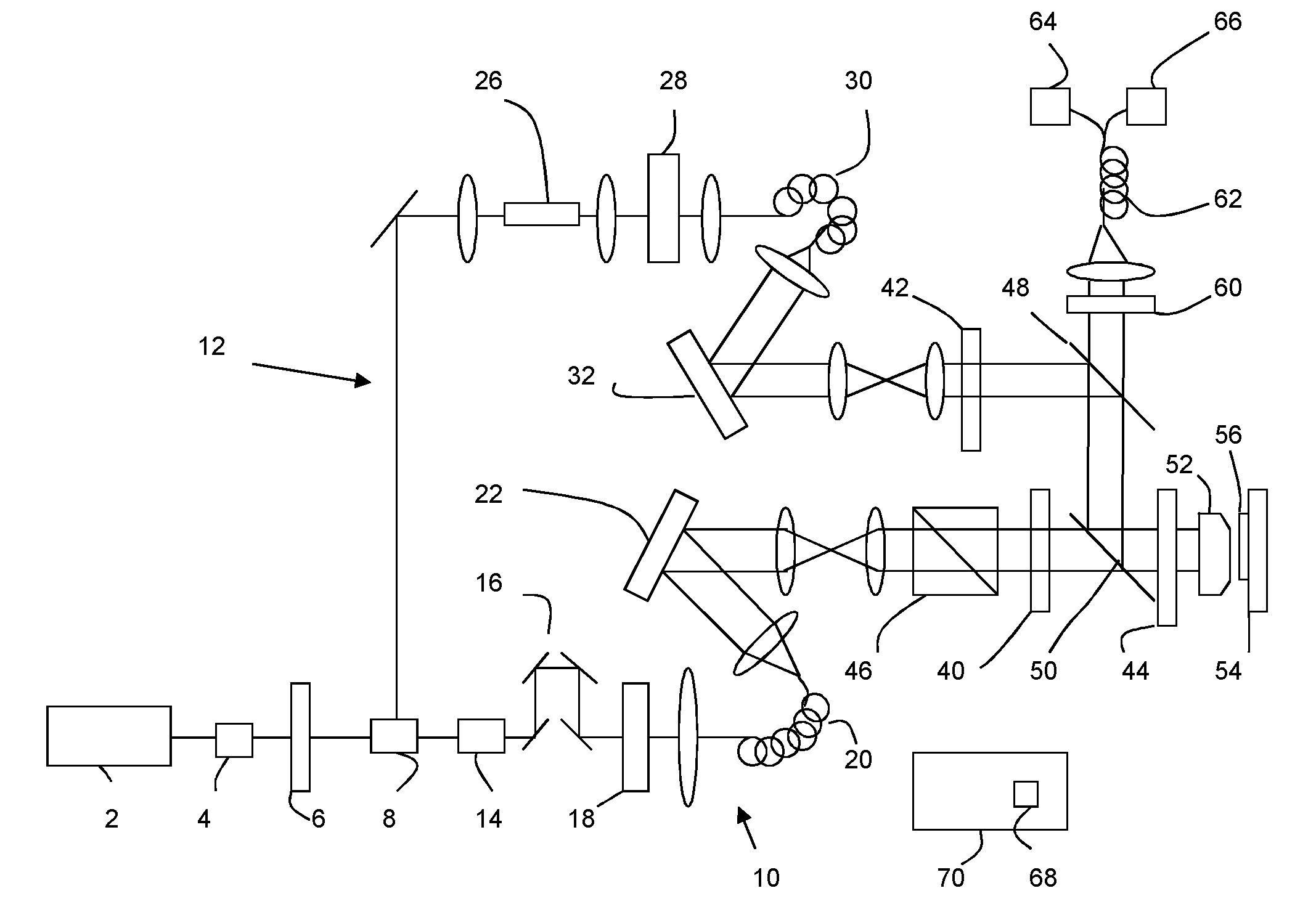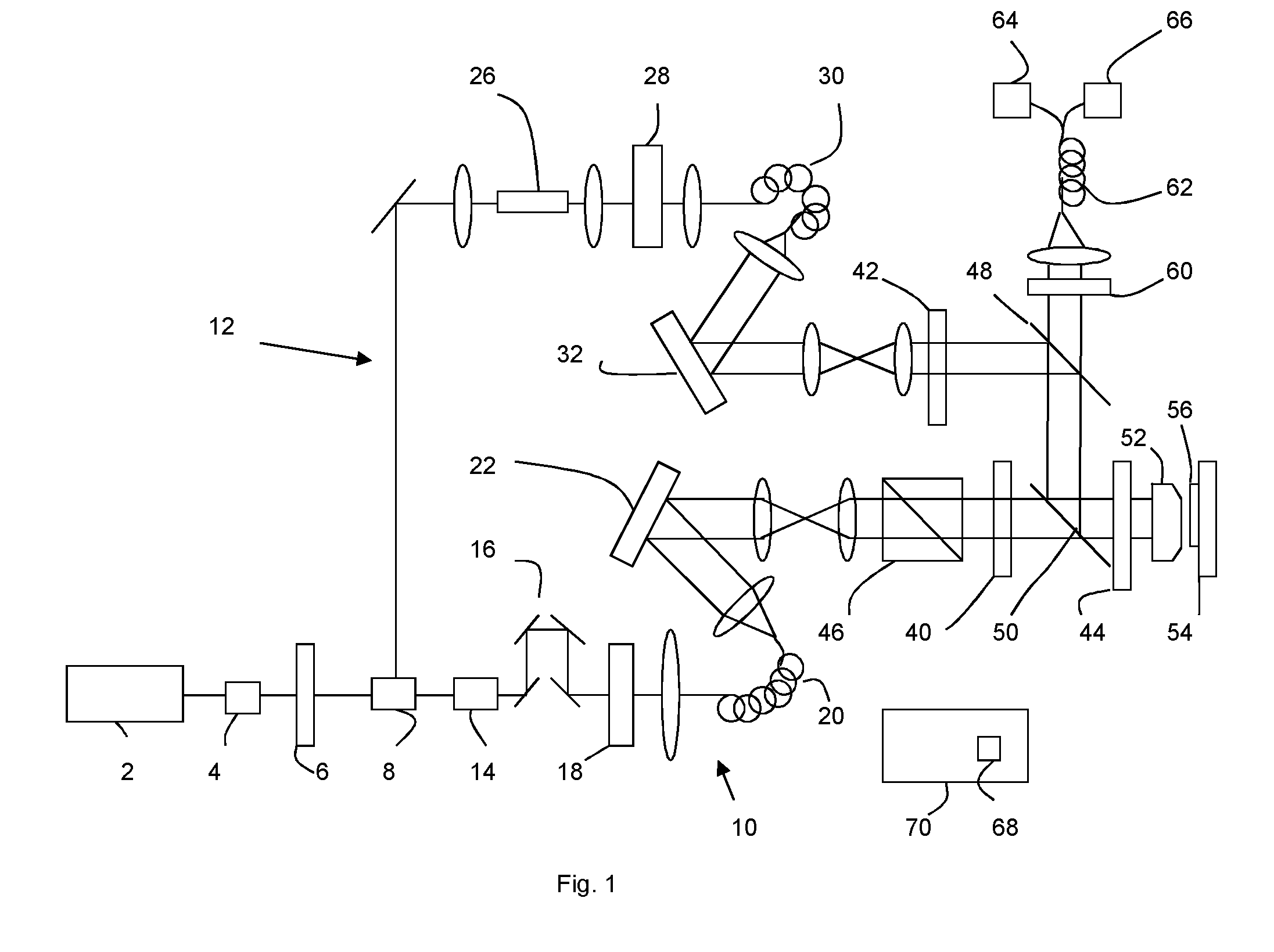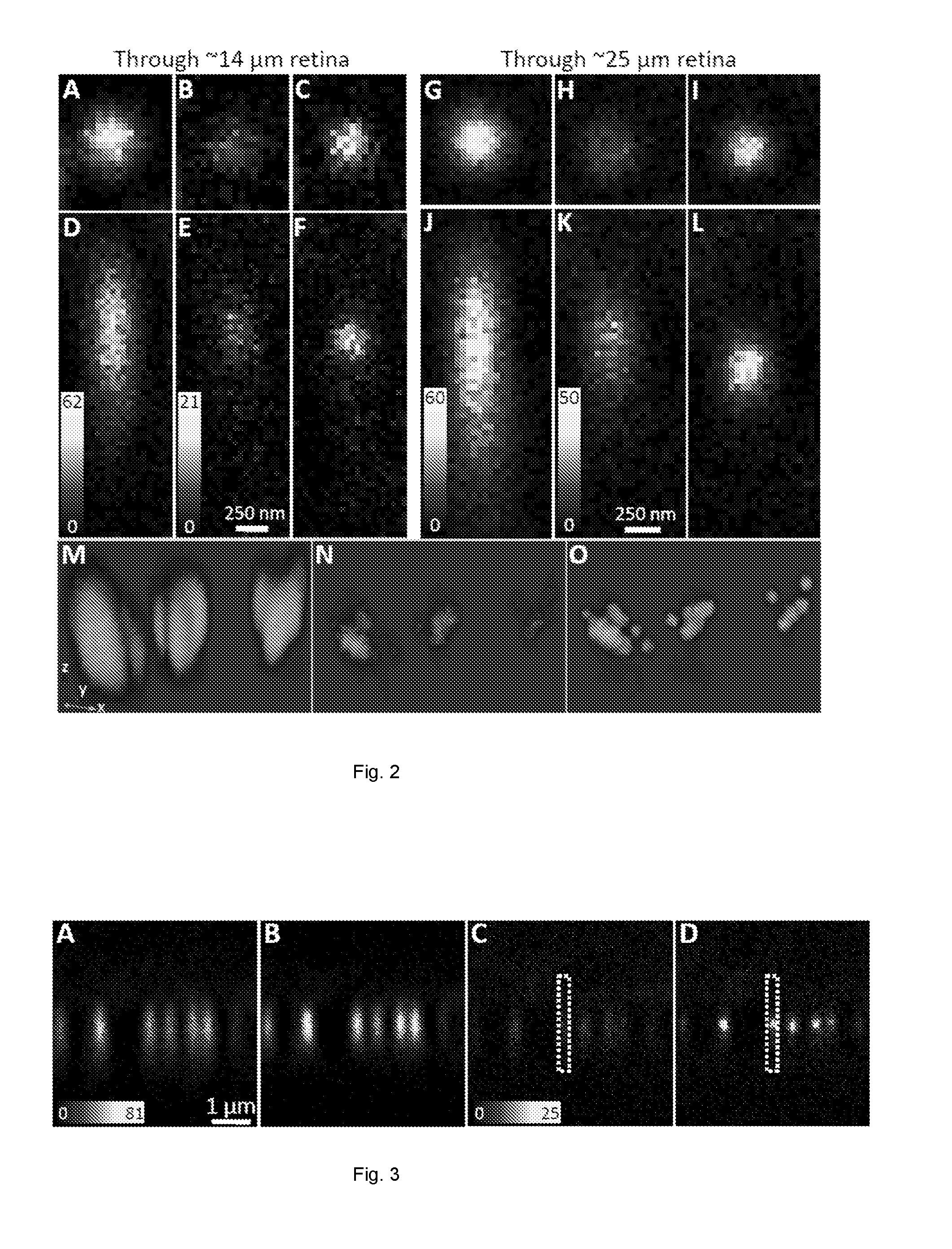Stimulated emission depletion microscopy
- Summary
- Abstract
- Description
- Claims
- Application Information
AI Technical Summary
Benefits of technology
Problems solved by technology
Method used
Image
Examples
Embodiment Construction
[0039]FIG. 1 illustrates the AO STED setup used in an example embodiment. The output from an 80 MHz mode-locked Ti:Sapphire laser 2 was passed through a Faraday isolator 4 and a half-wave plate 6 before being split into two beam paths 10,12 by a Glan laser polarizer 8. The transmitted beam 10 was used for STED illumination, i.e. for depletion, and hence the corresponding optical path will be referred to as the depletion pulse beam path 10. This beam was passed through a 19 cm long glass block 14, a delay stage 16 for pulse delay adjustment, and an acousto-optical modulator 18 for laser power adjustment before it was coupled into a 100 m long polarization-maintaining single mode fiber 20. The glass block and single mode fiber served to stretch the pulses to a few hundred picoseconds.
[0040]To generate synchronized excitation pulses, the excitation beam along excitation beam path 12 reflected at the Glan laser polarizer was focused into a photonic crystal fiber 26 (SCG-800, Newport—®)....
PUM
 Login to View More
Login to View More Abstract
Description
Claims
Application Information
 Login to View More
Login to View More - R&D
- Intellectual Property
- Life Sciences
- Materials
- Tech Scout
- Unparalleled Data Quality
- Higher Quality Content
- 60% Fewer Hallucinations
Browse by: Latest US Patents, China's latest patents, Technical Efficacy Thesaurus, Application Domain, Technology Topic, Popular Technical Reports.
© 2025 PatSnap. All rights reserved.Legal|Privacy policy|Modern Slavery Act Transparency Statement|Sitemap|About US| Contact US: help@patsnap.com



